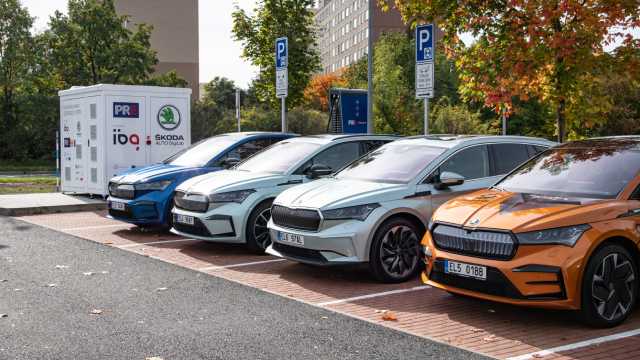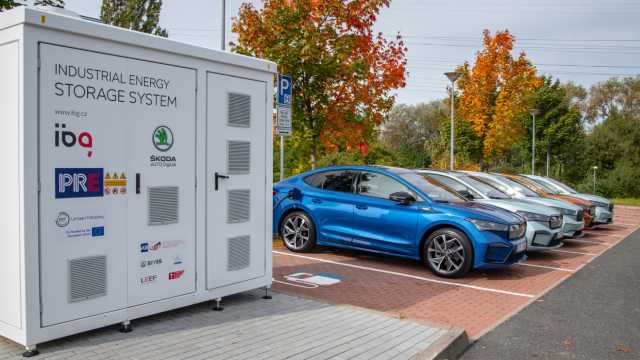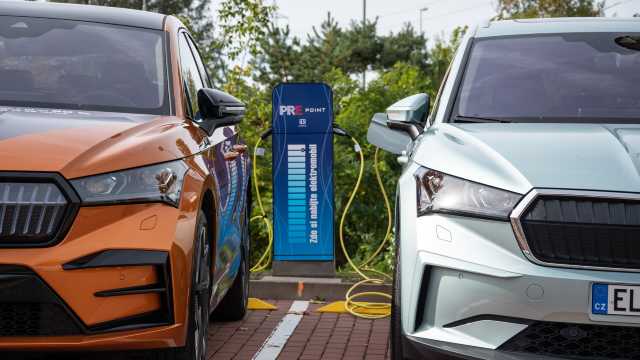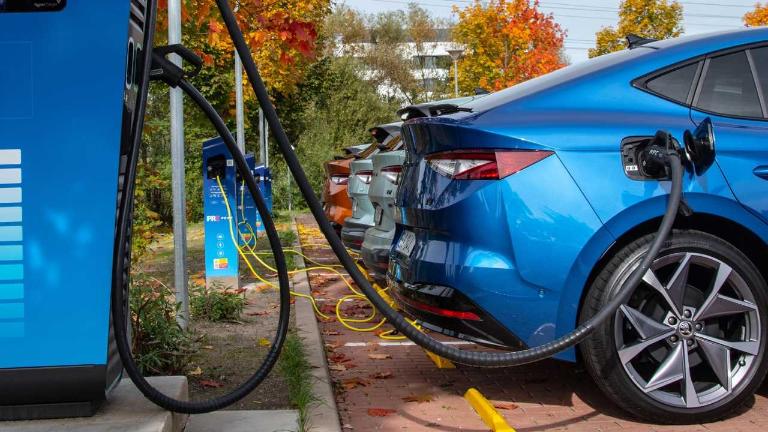The second life of batteries, a resource for sustainable mobility
End-of-life vehicles’ batteries can be reused in different ways: ŠKODA focuses on innovative solutions for creating stationary energy storage systems.
Sustainable mobility is not only about the production of vehicles, but their entire life cycle. ŠKODA aims to be all-round sustainable, and to achieve this it is taking a number of innovative and effective measures to reduce its carbon footprint.
One of these solutions is reusing batteries from electric or plug-in hybrid cars that have completed their life cycle, which are still very useful for other purposes. Under normal conditions, the capacity of the accumulators in a Volkswagen Group electric vehicle should not fall below 70 % in the first 8 years or 160,000 kilometers. Once a battery has reached the end of its life in a car for whatever reason, it has a second life as a stationary store of electricity.

Fifteen years
The stationary applications of batteries can be many: several ŠKODA dealers use them as part of their charging stations or to power lighting and air conditioning systems in showrooms. Batteries come not only from the all-electric ENYAQ iV, but also from plug-in hybrids such as the OCTAVIA iV and SUPERB iV.
But how long does the second life of batteries last? According to data from a pilot project, in stationary use, storage capacity decreases by only about 2 percent per year, meaning that the overall service life of a battery can be up to 15 years, significantly reducing the carbon footprint. After that, only at the end of this second life a controlled recycling process begins, which allows raw materials to be recovered and reused to make new batteries.

Flexible and modular systems
The capacity of a stationary storage system is up to 300 kWh, so it can also power ultrafast charging stations, up to 240 kW. Smart systems also store green electricity generated from renewable sources such as, for example, a dealer's photovoltaic system, which can sometimes produce surplus power. Being able to store this electricity means having it available at all times, regardless of weather conditions and momentary grid load.
An additional advantage of stationary energy storage systems is that they can be easily modified, either to vary their size or to replace battery modules that are no longer efficient. ŠKODA will build more than 4,000 of these systems in the next few years, always using batteries from end-of-life cars.

The distribution network
Energy storage facilities of this type are the solution for the deployment of charging infrastructure in remote locations where it otherwise would be difficult. Before batteries are deployed in this way, they undergo a capacity test consisting of a full charge and discharge, a visual inspection, and a communication test.
There is already a public charging station in Prague that uses second-life batteries for energy storage - derived from the ENYAQ iV prototypes used for development testing - equipped with twelve columns, 10 of which have an output of 22 kW and two on an ultra-fast 150 kW. The system has a capacity of 300 kWh and significantly reduces the load on the distribution system. The project is being implemented together with Pražská energetika, which is testing these solutions as an alternative method of expanding the distribution network without the use of cables.
Security
Of course, safety is always a priority. The batteries approved for use in vehicles are very robust and already incorporate active safety features that monitor a number of parameters. Just in case, the stationary storage unit is equipped with a fire valve that intervenes if necessary by flooding and completely cooling the battery compartment.
Since last May ŠKODA has begun assembling battery packs in Mladá Boleslav for vehicles based on the Volkswagen Group's MEB platform. The current production capacity is 250,000 batteries per year and will increase to 380,000 units by the end of 2023. ŠKODA ENYAQ iV is produced at the same plant, right next to the line dedicated to batteries, which are then installed not only in ŠKODA models, but also in other vehicles of the Volkswagen, Audi and SEAT brands.
Source: ŠKODA
VGI | Responsible OU: VP | Creation date: article date | Class 9.1
